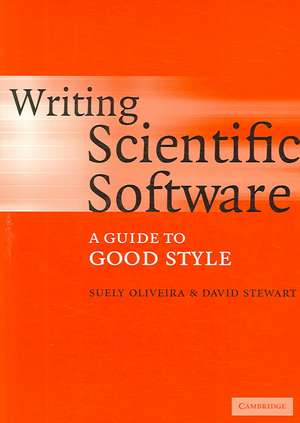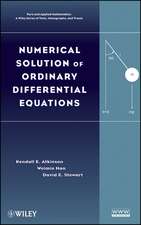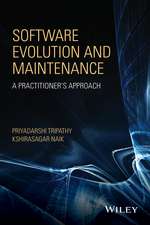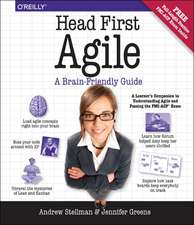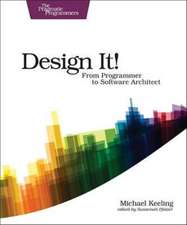Writing Scientific Software: A Guide to Good Style
Autor Suely Oliveira, David E. Stewarten Limba Engleză Paperback – 6 sep 2006
Preț: 394.86 lei
Preț vechi: 493.58 lei
-20% Nou
Puncte Express: 592
Preț estimativ în valută:
75.57€ • 82.05$ • 63.47£
75.57€ • 82.05$ • 63.47£
Carte tipărită la comandă
Livrare economică 22 aprilie-06 mai
Preluare comenzi: 021 569.72.76
Specificații
ISBN-13: 9780521675956
ISBN-10: 0521675952
Pagini: 316
Ilustrații: illustrations
Dimensiuni: 246 x 174 x 16 mm
Greutate: 0.54 kg
Editura: Cambridge University Press
Colecția Cambridge University Press
Locul publicării:Cambridge, United Kingdom
ISBN-10: 0521675952
Pagini: 316
Ilustrații: illustrations
Dimensiuni: 246 x 174 x 16 mm
Greutate: 0.54 kg
Editura: Cambridge University Press
Colecția Cambridge University Press
Locul publicării:Cambridge, United Kingdom
Cuprins
Part I. Numerical Software: 1. Why numerical software?; 2. Scientific computation and numerical analysis; 3. Priorities; 4. Famous disasters; 5. Exercises; Part II. Developing Software: 6. Basics of computer organization; 7. Software design; 8. Modularity and all that; 9. Data structures; 10. Design for testing and debugging; 11. Exercises; Part III. Efficiency in Time, Efficiency in Memory: 12. Be algorithm aware; 13. Computer architecture and efficiency; 14. Global vs. local optimization; 15. Grabbing memory when you need it; 16. Memory bugs and leaks; Part IV. Tools: 17. Sources of scientific software; 18. Unix tools; 19. Cubic spline function library; 20. Multigrid algorithms; Appendix A: review of vectors and matrices; Appendix B: trademarks; Bibliography; Index.
Recenzii
'Writing Scientific Software bridges the chasm that too often separates numerical analysis from real scientific computing. It is full of tips, tricks, and just plain interesting information. The reader will learn how to write code that takes advantage of many hidden features in modern computer architectures, programming languages, and compilers. This is a book that is full of good sense.' William H. Press, author of Numerical Recipes
'The book is a useful tool working in the filed of scientific computations…' Zentralblatt MATH
'The book is a useful tool working in the filed of scientific computations…' Zentralblatt MATH
Notă biografică
Descriere
A manual and guide to good scientific computing style, explaining how to write good software and how to test it for bugs, accuracy and performance.
